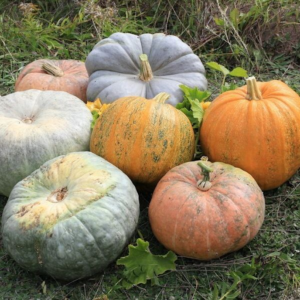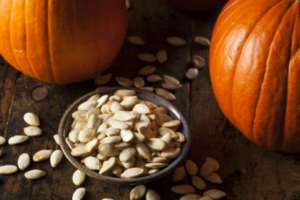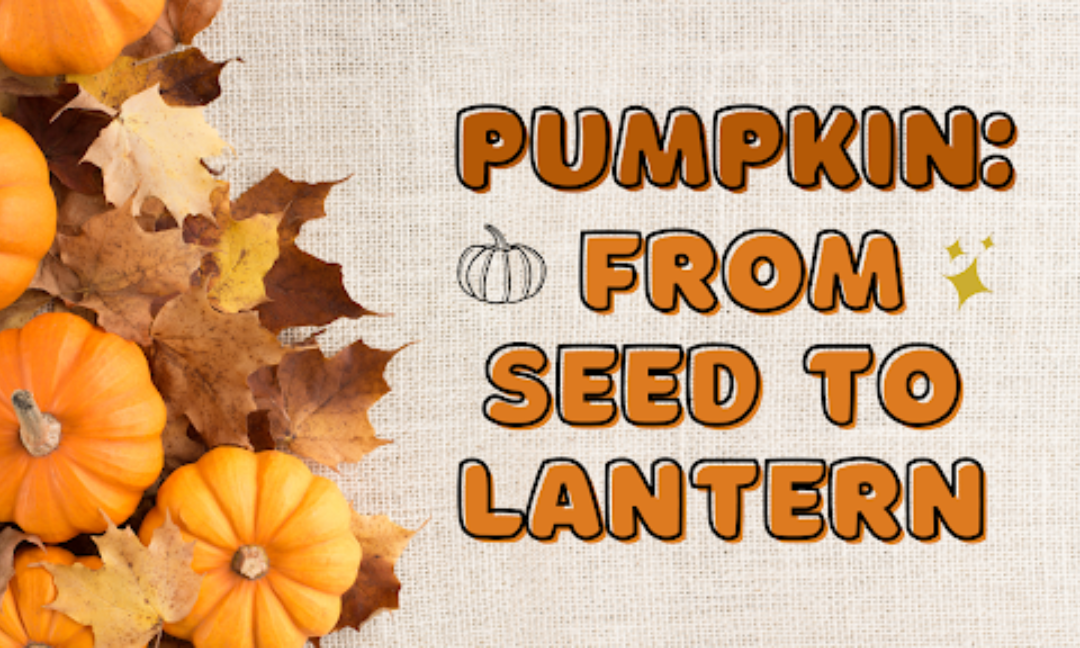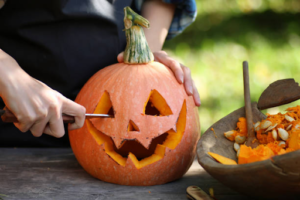Pumpkins: From Seed to Lantern
Written By: Shaheer Sohail
Edited By: Linda Qi
Designed By: Linda Qi
Published By: Samantha Porte
Pumpkins: From Seed to Lanterns

PUMPKINS are one of the most versatile and colourful plants for growing at home. Whether you prefer carving their faces or roasting them to make a tasty soup, there’s an amazing variety of pumpkin types available as seedlings or seeds. Growing your own pumpkins not only saves money, but also provides a fun activity for fall. Plus, you’ll have plenty of delicious vegetables with which to make your favourite dishes! Read on to learn how to grow a pumpkin from seed indoors or out, along with tips on what kind of soil to use and when to plant the seeds so that they grow into giant jack-o’-lanterns by October.
What You’ll Need
When growing pumpkins, it’s best to choose a variety that grows in your climate. There are many types of pumpkin seeds available for purchase, or you can try growing a squash variety if it is more appropriate for your climate. There are many types of pumpkin plants to choose from, including ‘New England Pie’, ‘New England Sugar’, ‘Small Sugar’, and ‘Jack-O-Lantern’ ‘Butternut’, ‘Connecticut field’, ‘Orange Kuri’ and ‘Banana Squash’. Make sure you choose a variety that is meant to grow well in your area. There are even varieties that are specifically bred to be grown indoors! Next, you’ll need a space to grow your pumpkin. Growing them indoors is ideal if you live in an area with cold weather. To grow the pumpkin, you’ll need soil, compost, and fertilizer (if growing indoors). However, if growing your pumpkin outdoors, make sure to select a sunny spot that is free of any weeds and rocks. The soil should be loose and fertile. If growing your pumpkin indoors, you will need a pot that is at least 12 inches in diameter.

Grow Your Own Pumpkin
The next step is to grow the pumpkin. When growing your pumpkin indoors, it’s best to start the seeds in early spring. You can also start your pumpkin seeds indoors in early summer, but the growing process will be a bit longer. When starting your seeds indoors, make sure to use a pot that has holes in the bottom to allow water to drain out. This will reduce the risk of root rot. For soil, you can use a combination of peat moss, vermiculite, and perlite for the best results. When growing your pumpkin outdoors, you can start the seeds in late spring or early summer. Before planting your pumpkin seeds, it’s best to soak them overnight to increase their germination rate. You can plant your pumpkin seeds directly in the soil, but it’s best to start with a mound of soil and place the seeds inside the mound. Make sure that the soil mound is around 6 inches tall. To keep your pumpkin healthy, make sure to water it regularly and feed it fertilizer once a month.

Carving and Shaping a Lantern
After growing your pumpkin, it’s best to wait until it’s fully ripened (usually around Halloween). Once your pumpkin is fully grown, you can start carving it and shaping it into a lantern. After carving and shaping your pumpkin, it’s best to let it dry for a few days to avoid rot. You can dry your pumpkin by placing it outside in a warm, dry, sunny spot. For a healthy pumpkin, it’s best to check it every few days and remove any insects or dirt. It’s also a good idea to water your pumpkin every two or three days to keep it from drying out. Once the pumpkin has dried, you can store it in a cool, dark place until you are ready to use it.
Conclusion
In conclusion, pumpkins are a fun fall crop that can be grown indoors and outdoors! Growing your own pumpkins not only saves money, but it also provides an exciting opportunity to have fun with your loved onesl. Plus, you’ll have plenty of delicious vegetables with which to make your favourite dishes! Growing these plants is relatively easy and can be done indoors or out. Overall, keep in mind that growing indoors gives you more control over the environment; you can adjust the soil, water, and light conditions to suit the needs of your plants! Whether growing indoors or outdoors, carving, eating, or decorations, you’re sure to have a great time growing pumpkins!
Sources:
14, Mark Macdonald | April. “How to Grow Pumpkins.” West Coast Seeds, https://www.westcoastseeds.com/blogs/how-to-grow/grow-pumpkins.
Holmberg, Kim. “How to Save Pumpkin Seeds to Plant Next Year.” Farm Flavor, 29 Sept. 2021, https://farmflavor.com/lifestyle/saving-seeds/.
n/a,. “Jack o Lantern.” Pexel, https://www.pexels.com/photo/jack-o-lantern-236277/.
N/a, Audrey. “Different Types of Pumpkin.” Different Types of Pumpkins and Their Uses, 29 Sept. 2020, https://audreyslittlefarm.com/different-types-of-pumpkins-and-their-uses/. Accessed 18 Aug. 2022.
Rhoades, Heather. “Saving Pumpkin Seed.” Saving Pumpkin Seeds: How To Store Pumpkin Seed For Planting, 7 Mar. 2021, https://www.gardeningknowhow.com/edible/vegetables/pumpkin/saving-pumpkin-seeds-how-to-store-pumpkin-seed-for-planting.htm. Accessed 18 Aug. 2022.
N/a, N/a. “Carve Pumpkins for Halloween.” IStock, n.d., https://www.istockphoto.com/photos/pumpkin-carving-tools . s .


